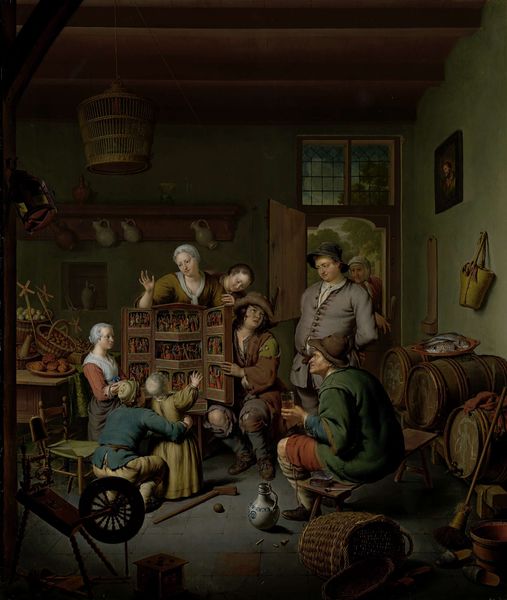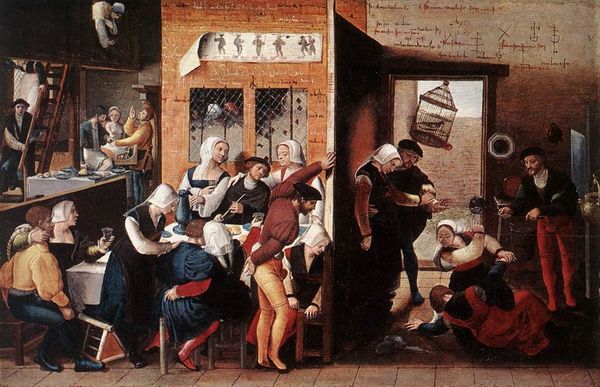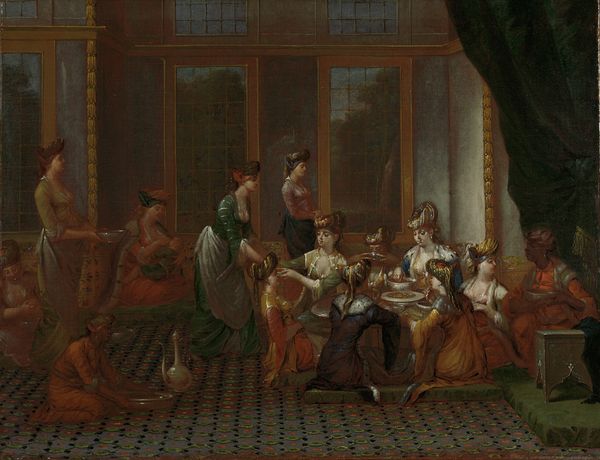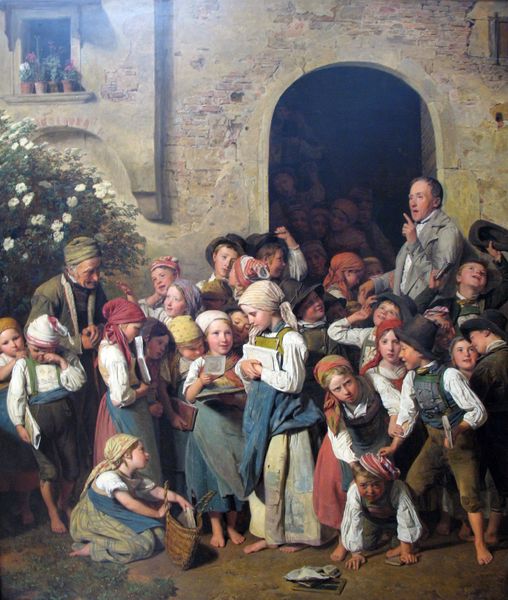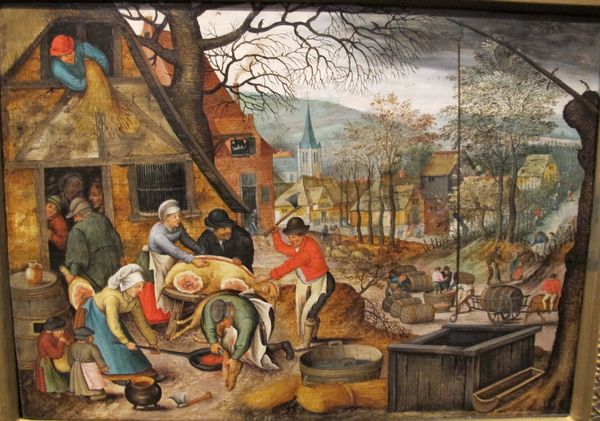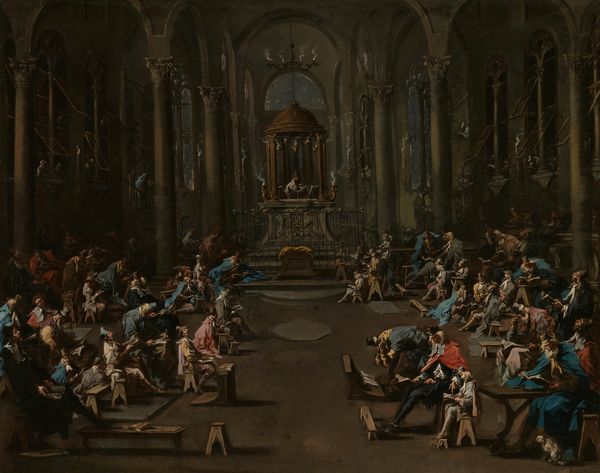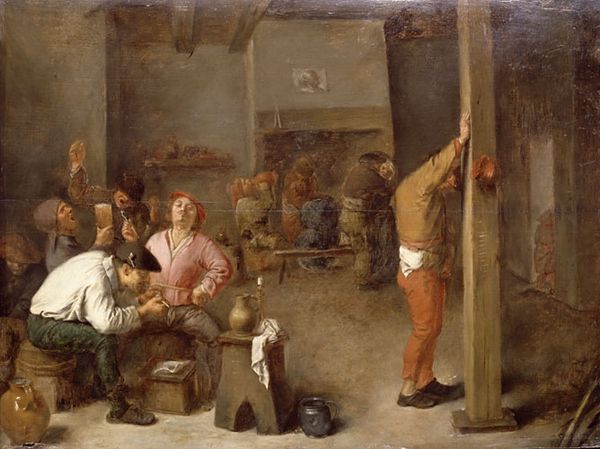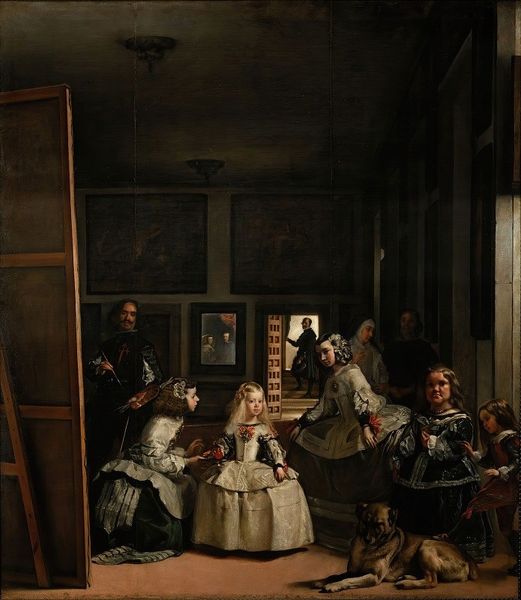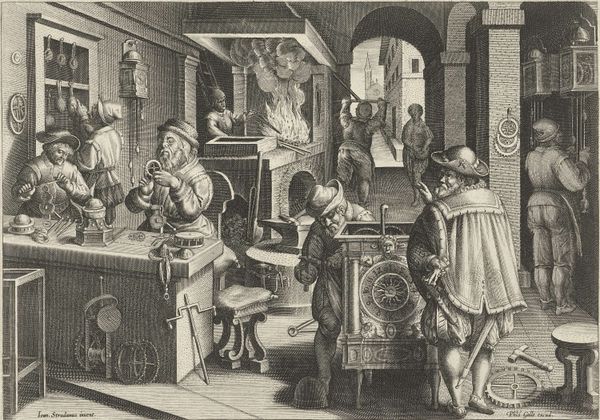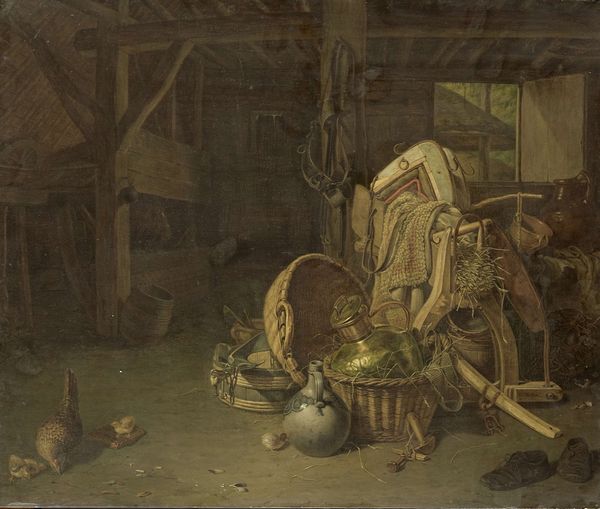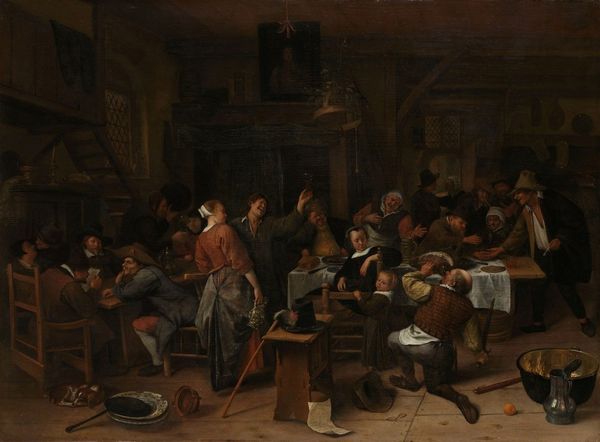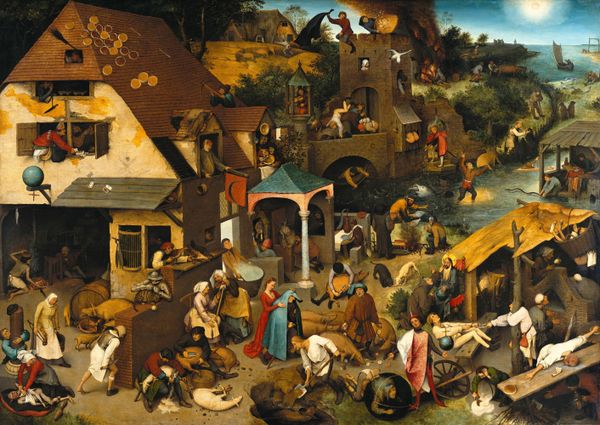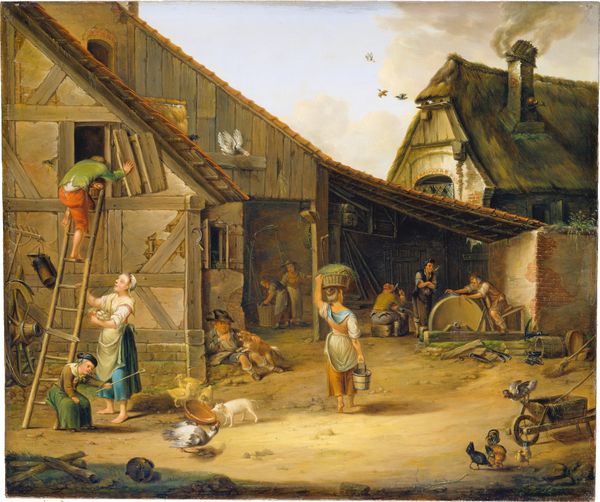
painting, oil-paint
#
allegory
#
narrative-art
#
painting
#
oil-paint
#
mannerism
#
genre-painting
#
history-painting
Dimensions: height 30 cm, width 39.5 cm
Copyright: Rijks Museum: Open Domain
Cornelis van Dalem created "The Legend of the Baker of Eekloo," a puzzling oil on panel, sometime in the 16th century. The scene is dominated by a sharp contrast between the dark interior setting and the bizarre, brightly lit figures within. The composition is split into zones—bakers at work on the left, figures with cabbage heads in the foreground, and a procession of people on the right. This division destabilizes the narrative, turning it into an enigmatic tableau. Note how the artist uses contrasting textures, from the smooth faces to the rough cabbage heads, which creates a jarring visual experience. The linear perspective converges oddly, enhancing the dreamlike quality. Is this a critique of social order, or is it a commentary on human folly? Van Dalem’s painting uses absurd imagery to challenge our notions of the normal, prompting us to reconsider what we accept as truth. The very structure of the painting—its discordant elements and spatial ambiguities—makes it a site for questioning fixed categories of meaning.
